Our cognitive and cultural games program CLINT is used by adolescents with DYS, and we are proud to support all DYS disorders: dyslexia, dyspraxia, dysphasia, dyscalculia, … In this guide, you will discover which games to use based on the cognitive needs of each child.
Our cognitive games program CLINT is designed in collaboration with health professionals: speech therapists, neuropsychologists, and psychomotor therapists.
We are internally supported by Sara BONOTTI, our psychomotor therapist.
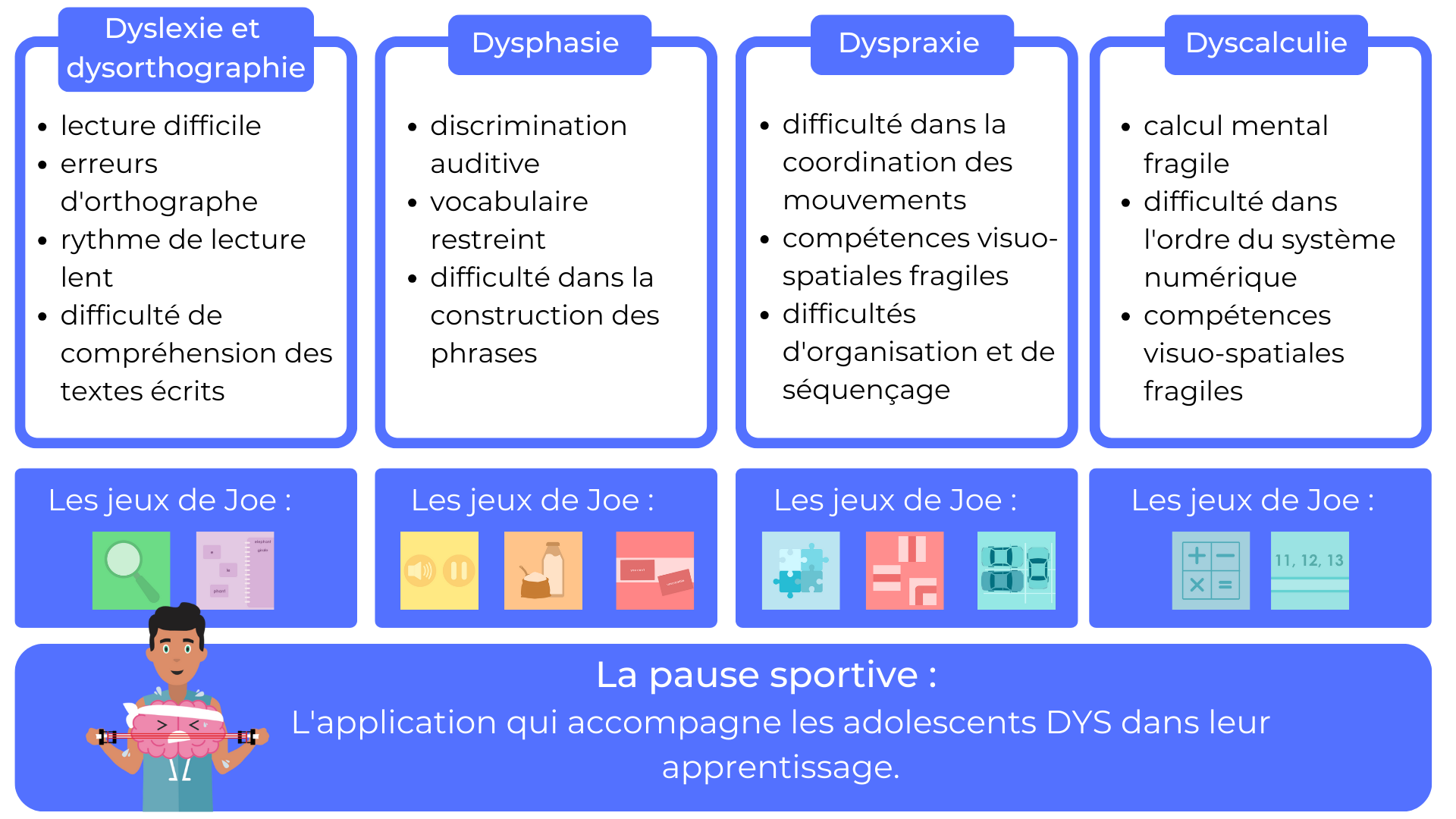
3 MONTHS
- Performance tracking
- Monthly updates
- Customer support
- No automatic renewal
15 EUROS
1 YEAR
- Performance tracking
- Monthly updates
- Customer support
- No automatic renewal
50 EUROS
1 HOUR OF COACHING
- 1 hour of individual coaching
- Recommendations, advice, and practical strategies
40 EUROS
CLINT TABLET 1 YEAR
- Galaxy Tab A8 10.4 32 Go + case
- 1-year CLINT subscription included
- A standard tablet
- A simplified interface
297 EUROS
CLINT is a cognitive stimulation program on tablets and smartphones for adolescents and young adults. It can be used by all adolescents who wish to improve their cognitive functions, even in the presence of comprehension disorders.
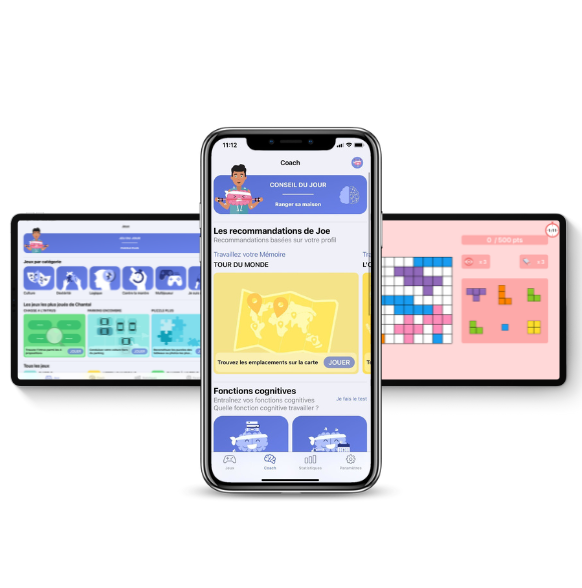
Furthermore, all our games on CLINT comply with accessibility standards, including audio instructions, to facilitate understanding and independent play for adolescents.
In addition, we have developed the following points:
- Visual ergonomics: the interface must be simple and intuitive
- Colors and contrasts: all game elements are highly contrasted.
- 3 levels of difficulty: to adapt the level to the adolescent’s needs
Here are the different tools available to best support an adolescent with specific language disorders:
Technical Sheets
When it comes to adolescents, all aspects of their development must be considered.
That’s why CLINT offers games that act on different cognitive functions. It is thus possible to choose the games that best suit each individual’s abilities and needs.
Each game acts on different cognitive functions.
Type of Work
We have developed a technical sheet for each game.
The sheets are customized based on the type of work desired: for cross-cutting work or for specific work. For example, we have sheets on autism, Down syndrome, or DYS disorders.
You will find the usefulness of each game, on a scale from 0 to 3, for each cognitive function.
The technical sheets are accessible from our tracking platform: www.stimart.com.

Here are our games adapted for DYSLEXIA and DYSORTHOGRAPHY
Dyslexia is a disorder that affects reading ability, meaning difficulty in recognizing and reproducing written language. It is possible to have slower reading and difficulty understanding the text read.
Dysorthography is a difficulty related to writing. The adolescent may make spelling mistakes. A slowdown in writing can also be observed.
Intruder Hunt
In this game, the person must find the intruder among the four proposed words.
With “Intruder Hunt,” the adolescent works on word identification, as they must read the proposed words, recognize them, and assign meaning to them.
Furthermore, they work on semantic classification, as they must identify the category to which each word belongs.

Syllabus
In this game, the person must form words from the present syllables.
With “Syllabus,” the adolescent works on phonemic synthesis and thus the ability to assemble several syllables to reconstruct a word. The adolescent must recognize the syllables, combine them in the correct order, and find the right word. Spelling skills are also stimulated.
At the easy level, the words to be reconstructed can be seen, so the reverse work can also be done: from the word, the adolescent must divide it into syllables and then look for the correct syllables among those proposed.
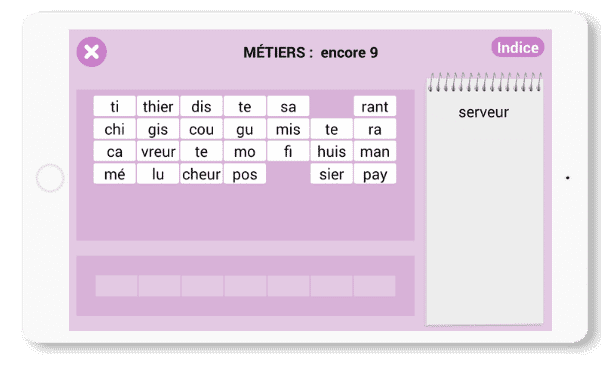
Many games from the CLINT program are adapted for dyslexic adolescents.
Here are our games adapted for dysphasia
Dysphasia is a specific developmental disorder of speech and language that involves difficulties in the normal acquisition of receptive and/or expressive language. The adolescent may have difficulty finding the right words or making complex sentences. The order of words in the sentence may also be confusing, which affects comprehension.
Musical Ear
In this game, the adolescent must listen to a sound, an animal, or an instrument and identify it by choosing from four options.
This game trains auditory attention and discrimination.
Moreover, the adolescent must associate the sound with the appropriate object/animal/instrument and search for the word in their vocabulary.
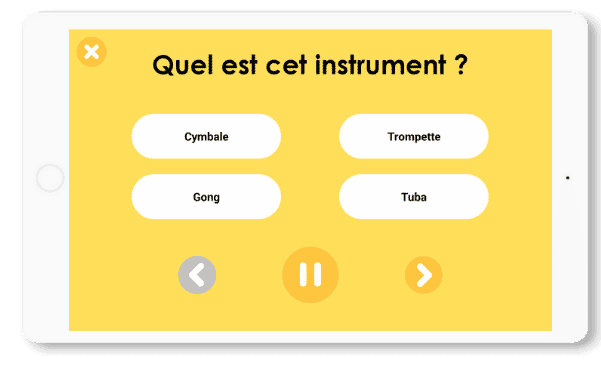
Brainstorming
In this game, the adolescent must reconstruct a proverb from the present words.
With “Brainstorming,” we work on word identification and syntax, as the adolescent must place the words in a coherent order (subject, verb, complement).
At the difficult level, the sentences are more complex, and we also work on sentence construction.
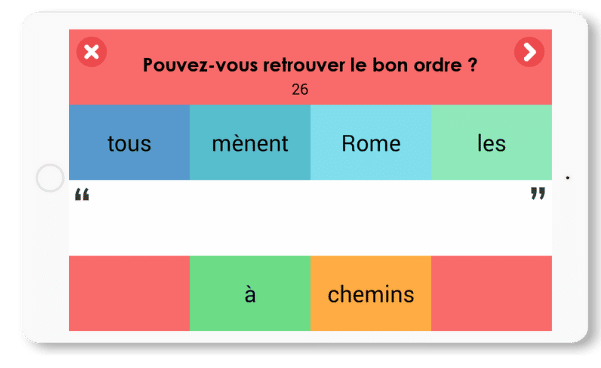
Grandma’s Cooking
In this game, the adolescent must read a recipe or a list of ingredients and memorize it.
With “Grandma’s Cooking,” you work on semantic memory and vocabulary.
Additionally, in the “recipe” mode, the adolescent must remember the sequence of the recipe: sentence construction and elocution can thus be stimulated.
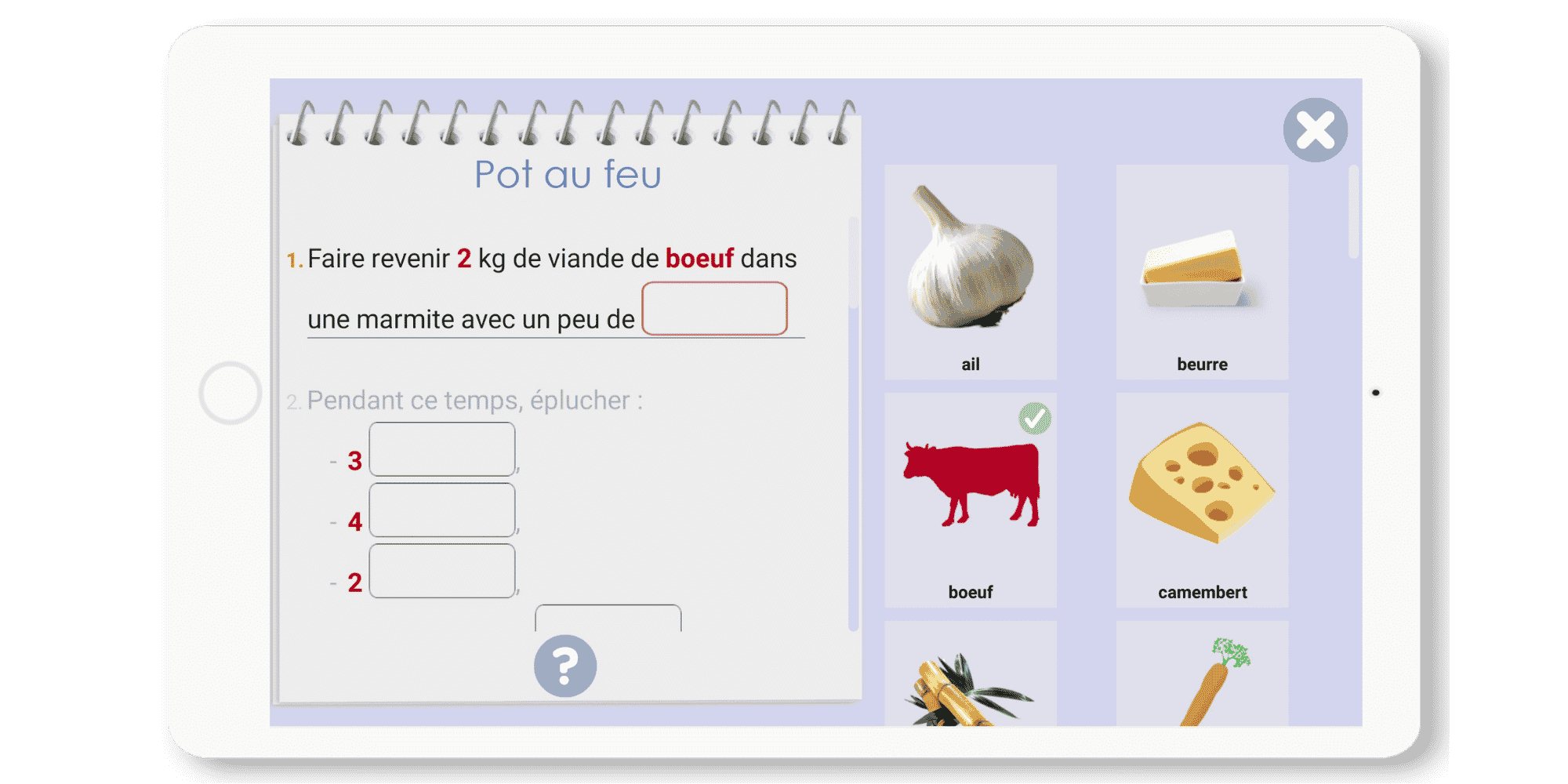
Many games from the CLINT program are adapted for dysphasic adolescents.
Here are our games adapted for dyspraxia
Dyspraxia in adolescents is a difficulty in performing certain voluntary gestures and actions. It affects, for example, the ability to position oneself in space and/or the coordination of movements. There may be difficulties in organizing materials or the space available on the sheet. All technical subjects that require precision in gestures or spatial organization become difficult.
Puzzle Plus
In this game, the adolescent must reconstruct a puzzle by moving the different pieces of the image.
With “Puzzle Plus,” visual-spatial skills are trained to recognize the different parts of the image and find the correct position.
Moreover, the child must organize the movements to be made, think about which piece to move first, and find strategies (starting from the edge or the central image…).

The Walker
In this game, the adolescent must place the pieces on a grid to create a path that leads CLINT to the goal.
With “The Walker,” you work on organization and sequencing to find the correct order of the pieces.
The adolescent must also call upon their spatial organization skills to place the pieces in the right spot and create a mental image of the path to be built.
Additionally, with the possibility of asking for hints (a piece will be placed in the right spot), the adolescent will have to adapt to the placed piece.
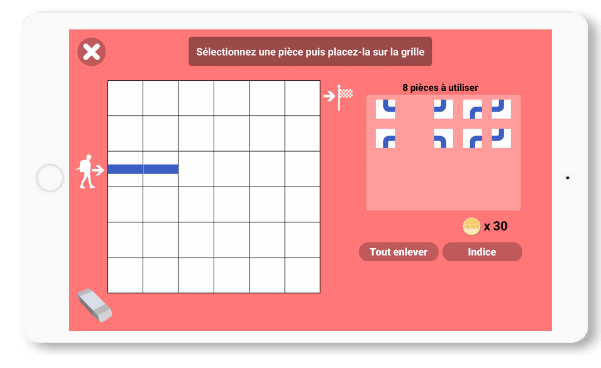
Congested Parking
In this game, the adolescent must move the cars on the screen to get the yellow car out of the parking lot.
This game allows for creating mental images to imagine the movements to be made.
Sequentiality will also be stimulated, as the movements must be made in the correct order to reach the solution.
By asking to see the solution, the adolescent can memorize the sequence, and the memory of the sequence will be worked on.
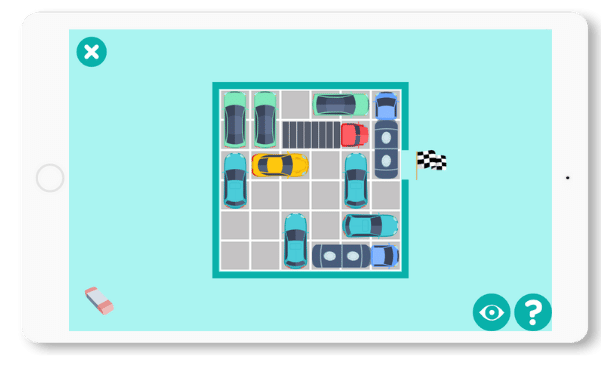
Many games from the CLINT program are adapted for dyspraxic adolescents.
Here are our games adapted for DYScalculia
Dyscalculia is a learning disorder in mathematics. The adolescent may have difficulty performing mental calculations or solving mathematical problems. The adolescent is unable to manipulate information related to numbers. Memorizing multiplication tables can also prove to be very difficult.
Calculus
In this game, the adolescent must solve mathematical operations.
With “Calculus,” mental calculation is practiced.
At the difficult level, there are also divisions and multiplications to improve knowledge of multiplication tables.
In free response mode, there are no hints to choose from, making mental calculation more difficult.
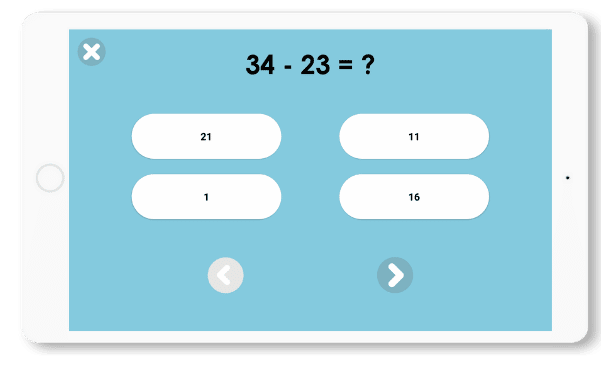
Infernal Sequences
In this game, the adolescent must watch a series of numbers and say when a sequence of 3 consecutive numbers appears, knowing that it can be an ascending or descending sequence.
In this game, the adolescent works on number recognition and the ability to find a sequence without starting from 0.
For example, when the number 23 appears, the adolescent must remember it, wait for the next number, check if it is consecutive to 23, and do the same with the next number. Working memory is thus stimulated.

Many games from the CLINT program are suitable for dyscalculic adolescents.
Assessing Student Progress and Results
Adolescents’ progress can be tracked in two ways:
The adolescent can track their own progress independently
The teacher has access to a progress tracking platform for their student and has resources, technical sheets, and automatic analyses that allow them to know which games are recommended according to the cognitive functions to be stimulated, then analyze the scores of each game and focus on the weakest cognitive functions that need to be stimulated.
With the CLINT program, the student can create their own profile and enjoy the thirty games available in the application.
When the student uses the application with their profile, they can see their progress in the application with:
- their favorite games
- The chosen difficulty levels
- The scores obtained
- The duration of play
It is on this screen that the general statistics of each student using the application can be found:

The Benefits of Cognitive Games for Adolescents
Cognitive games offer numerous advantages to adolescents, especially those facing learning difficulties. Here are some key benefits:
- Improvement in concentration: Games stimulate attention and help adolescents focus on specific tasks.
- Development of social skills: Playing in groups encourages interaction and learning of social rules.
- Memory enhancement: Memory games help improve information retention and recall ability.
- Stimulation of creativity: Games that require creative thinking encourage adolescents to think outside the box.
How to Integrate Cognitive Games into Daily Routine
To maximize the benefits of cognitive games, it is essential to strategically integrate them into adolescents’ daily routines. Here are some practical tips:
- Create regular playtime: Set specific times during the week to play cognitive games, for example, after school or on weekends.
- Vary the types of games: Alternate between different types of games to stimulate various cognitive skills and maintain interest.
- Involve the family: Encourage family members to participate in the games to strengthen bonds and create a collaborative learning environment.
- Track progress: Use tracking tools to observe improvements and adjust games according to the adolescent’s needs.
Cognitive Games and Stress Management in Adolescents
Adolescents face many stresses, whether academic or personal. Cognitive games can play a crucial role in stress management. Here’s how:
- Active relaxation: Games can serve as a relaxing activity, allowing adolescents to unwind after a stressful day.
- Improvement in mood: Playing fun games can release endorphins, thereby improving overall mood.
- Development of resilience: Games that involve challenges help adolescents learn to cope with failure and develop resilience.
- Mindfulness techniques: Some games incorporate mindfulness elements, helping adolescents focus on the present moment and reduce anxiety.
Cognitive Games as a Complementary Educational Tool
Cognitive games are not just entertainment tools but also powerful educational resources. They can complement school learning in several ways:
- Reinforcement of academic skills: Games can target specific skills such as mathematics, reading, and logic.
- Learning through play: Adolescents often retain information better when presented in a playful manner.
- Adaptability to different learning styles: Games can be adapted to meet the needs of visual, auditory, and kinesthetic learners.
- Encouragement of autonomy: Games allow adolescents to learn at their own pace and make decisions independently.




